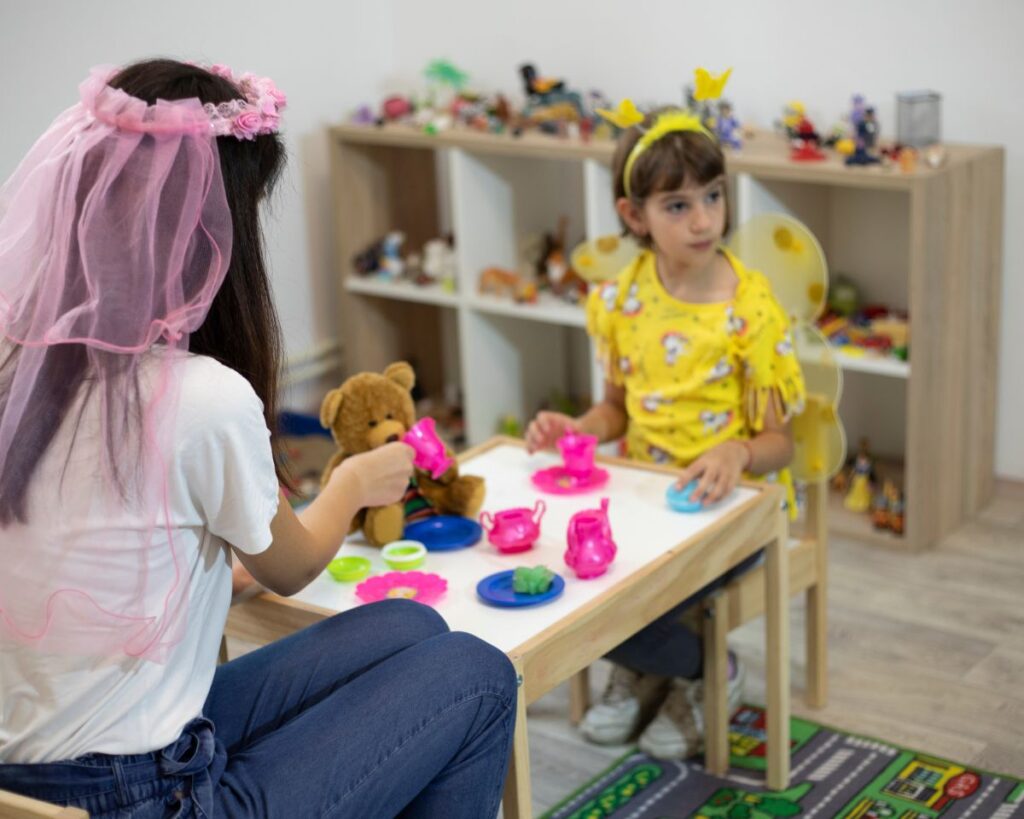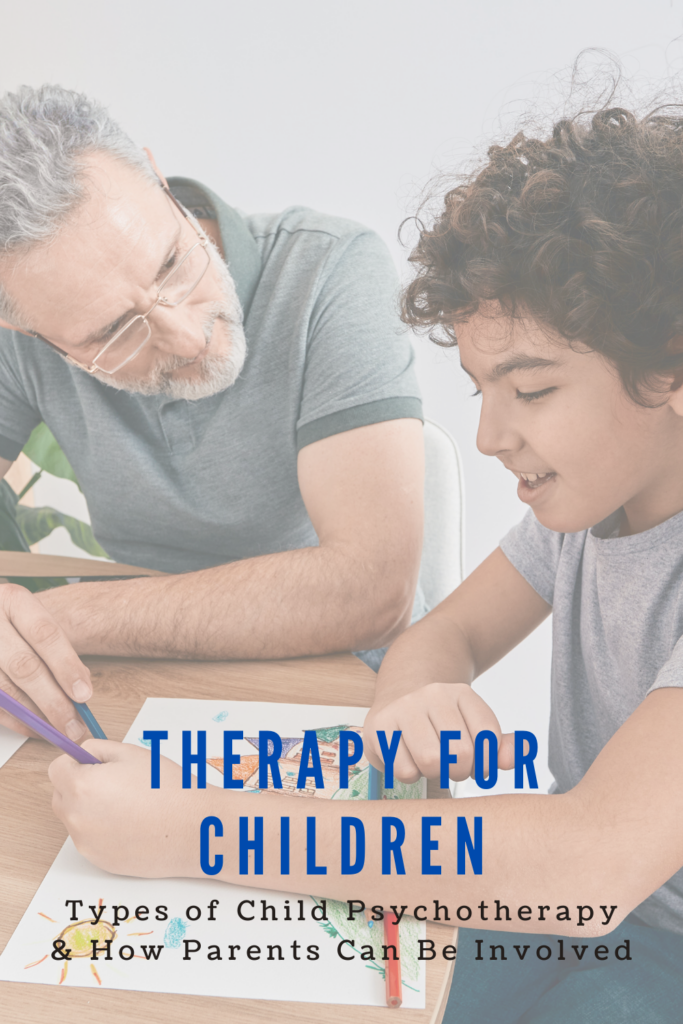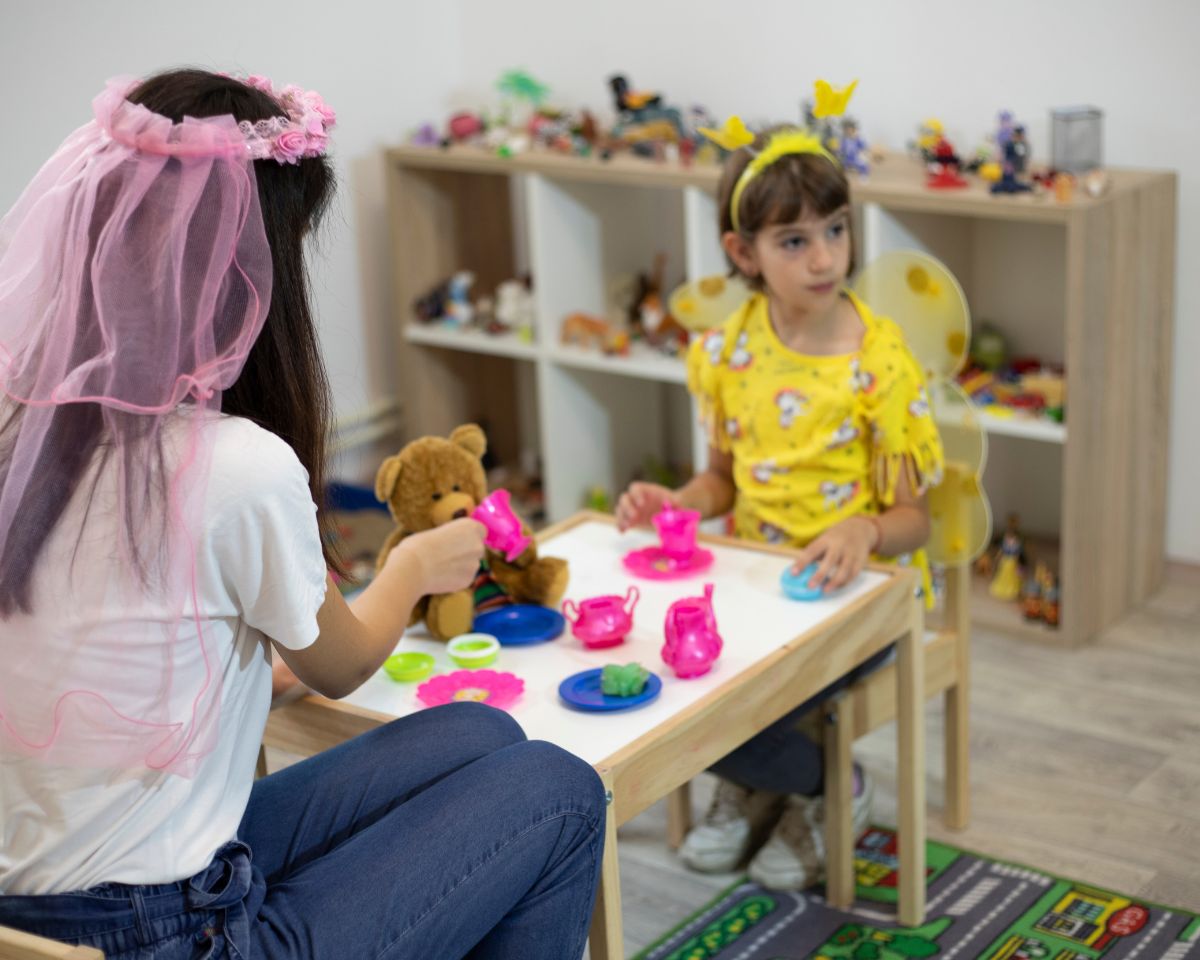
Therapy for Children: Types of therapy that work well for children, what therapy sessions look like, and how parents can be involved.
Please make an appointment through the patient portal or call 443-300-6094 if you’re interested in pursuing therapy in Howard County, Maryland through Happy Honeysuckle Healing Center. If you have a psychiatric or medical emergency, please contact 911 or go to your nearest emergency room.
This blog is for educational purposes only. This information is best case scenario, at least within the scope of my knowledge and experience at the time I write the post. Not only does everyone have different approaches to parenting and life- and my way may not be your cup of tea, but also- I am not perfect, nor do I want anyone to imagine that I am. Despite being a therapist and having a whole host of really cool techniques for all the mental health related things, I am constantly learning and trying to do better.
I’m hoping that this blog can help you. When we share what works for us, we can help others develop their own toolkit for improving their mental health.
What Does Therapy Look Like With Children?
Each clinician has a slightly different approach to therapy with children. While parents can seek therapy to work on ways to help their child manage these issues, individual therapy with children usually involves play, art, and other types of experiential therapy. These methods are more appealing to young children who often express and process their anxiety, depressive symptoms, and other issues through play. While grownups can talk through issues aloud, children play to process. For example, a child who has experienced anxiety over car crashes may process by playing through car crashes with toy cars, recreating scenes that may make them worried.
While some therapists will offer talk therapy with children, many children just aren’t able to express their emotions, nor do they have enough insight developed to process well. As they age, this gets easier for them, but it’s important to be realistic about what to expect.
Parents may say, “All they did was play a game!” but that game may have a huge impact on the child. It helps the child look forward to coming to therapy and helps the therapist form a therapeutic relationship with the child. Some of the best therapy moments can occur during a Mancala game or shooting hoops. Even adults can benefit from play based therapy and by ‘doing’ vs. just talking.
I love talking to friends and family about their early experiences attending therapy. They often shrug and say they just played games. Yep. Just like school, hands on experiences are often more educational than book learning and lectures. In therapy, we can incorporate a lot of learning into activities and games to help kids engage.
One of the most important things about therapy (for all ages) is a healthy relationship between the therapist and the client. This is one of the MAJOR factors that impacts the success of therapy- it’s less about the modality or theory, and more about the connection. Play helps form connection with children.
Types of Therapy for Children
Choosing the right type of therapy for your child is important. While most therapists who work with children are good at engaging kids and helping them learn new skills, certain types of therapy just mesh better for certain people. Where children don’t necessarily come into therapy understanding what it all means, it’s helpful to find a type of therapy that matches their interests. For example, play and art therapy is excellent for young children or children who love drawing. Animal Assisted Therapy is excellent for children who love animals. EMDR is better for children who have a trauma history.
Here’s a guide to SOME of the types of therapy offered for children. Some therapists get full certifications and focus in certain modalities. Others have training in multiple modalities. I consider Animal Assisted Therapy to be my predominant type of therapy that I offer, but I incorporate art, play, solution focused work, and CBT. But while I’ll invest time and money into getting fully certified for Animal Assisted Therapy, I don’t necessarily want (or need) to get certified in each in order to incorporate them.
- Directive Play Therapy: Directive play therapy is when a therapist uses directive activities to help a child work through issues. Most play therapists offer both directive and non directive work, and what they do may vary session to session.
- Non Directive Play Therapy: Non directive play therapy is child-led and the child chooses the toys and activities for the session. The therapist does a lot of reflective listening. Children often act out their thoughts and feelings in their play and the play helps them process traumatic experiences.
- Bibliotherapy: The use of books in session to help clients. How this model is used differs depending on if the therapist is seeing a child or adult, but child therapists will often use storytelling or read books to help clients learn a new skill. In Animal Assisted Therapy, this may look like reading about how an animal copes with sadness after his friend moves away, or something similar.
- Art Therapy: Art therapy focuses on using art to help process experiences, trauma, and work on coping mechanisms.
- Animal Assisted Therapy/Equine Assisted Therapy: Equine-assisted, canine-assisted, and animal-assisted therapy is relatively new to the therapy world, even though therapists have been bringing their pets into session for quite some time (I believe Freud may have brought his dog to session). The animal partners with the therapist in helping the client work on coping skills and learn new behaviors. There are a lot of different approaches to animal assisted therapy and most of these therapists have a base theory that they use (ie. they may have a base of CBT therapy or Solution Focused Therapy so they may teach CBT skills in the context of the animal assisted session). Some models have children learning to train the animals and identify animal body language, something that is really useful for children who struggle with social skills and awareness of the environment around them. Other models involve doing an activity with the animal which may help the client think ‘outside of the box’ or be less rigid about rule following (in appropriate contexts).
- Cognitive Behavioral Therapy (CBT): CBT therapists help clients examine how they think and how those thought processes may be dysfunctional. Dysfunctional thoughts can cause changes in mood and ultimately impact behavior. The therapist helps clients replace the thoughts with more appropriate (and realistic) thoughts.
- Dialectical Behavior Therapy (DBT): DBT is a talking based therapy that focuses on taking responsibility for your problems, examining and coping with big feelings, and learning skills to manage those feelings. This is similar to CBT and was initially used predominantly with adults and older adolescents, but I’ve seen some programs offering DBT for children now as well.
- Solution-Focused Therapy: Solution-focused therapy is a strengths based approach that helps clients use skills that have worked for them in the past to address current issues. This modality focuses more on the present and future, and less on the past.
- Eye Movement Desensitization and Reprocessing Therapy (EMDR): EMDR is generally used for children who have experienced trauma and may have a PTSD diagnosis. This modality focuses on rewiring your brain by moving your eyes in a particular motion while thinking about the event. There are also some practitioners who use EMDR within the context of Equine Assisted Therapy, although this is a newer approach.
- Parent Child Interaction Therapy (PCIT): This type of therapy involves a parent being coached by the therapist on how to interact with their child. It’s a great option when a child has behavioral problems at home and the parent needs better skills to handle the problems. The therapy occurs in two stages, the first is establishing warmth in the relationship.
- Group Therapy: Group therapy is an excellent option for teaching social skills and other psychoeducational content. Psychoeducational content is informational- it’s more like a class where you learn skills. Some groups are more supportive (aka each member talks about their experiences and does some processing), but this is generally better for older children/teens who are developmentally better able to do this type of work.
- Family Therapy: Family therapy helps address issues within the family dynamics. All members of the family who live at home should be present, as well as family members who may have a significant impact on the child involved. For example, a grandparent who watches their grandchildren after school every day may be a good person to involve if the child has become a go between for grandparents and parents or if the parents and grandparents aren’t on the same page in terms of discipline.
Common Topics Addressed in Therapy for Children
- Social skills
- Anxiety management techniques
- Depressive symptoms (younger children seem to have more anxiety symptoms than depressive symptoms)
- Anger management
- Executive functioning skills (re: ADHD)
- Relationships with peers, parents, and siblings
- Bullying
- Healthy Communication
- Assertiveness Skills
- Grief and loss
Importance of Therapy For Children
Not all children need therapy, but therapy has the potential to be extremely beneficial for children who are neurodivergent, anxious, or struggling with healthy relationships with others. I like introducing children to the idea of therapy at a young age, opening the door for them later in life to access therapy as needed. Being in therapy as a child takes away some of the fear about therapy and makes them more cognizant of their feelings. This may help them address those feelings and seek help sooner if they experience depressive symptoms as a teenager or adult.
Parents Play an Important Role in Therapy for Children
When children attend therapy, it’s important that parents are part of that process in some way. While some modalities involve a child’s grownups more than others, it’s important for grownups to keep the therapist informed about what is going well, what isn’t going well, and any current issues that the child may be experiencing. This helps the therapist treatment plan. Also, children often forget about what happened earlier in the week so kind reminders when you start session can be helpful.
I find it helpful for parents to attend sessions separately from their child to discuss diagnosis and possible strategies for helping a child manage their emotions.
Here are some considerations on if a parent should attend therapy with their child.


